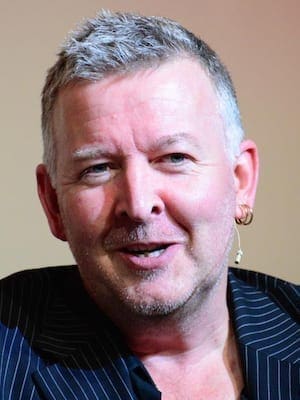William Willimon’s latest book, “Who Lynched Willie Earle? Preaching to Confront Racism,” often draws on his own Methodist tradition in order to honestly name racism as sin and engage in acts of “detoxification, renovation and reparation.”
Yet, his book contains several explicit “Baptist” themes, and Willimon draws upon aspects of the evangelical conversionist Methodist strand, something that could resonate with Baptists.
Several times when and where Willimon looks for an inspirational figure, a model of what it means to be able to preach in a way that confronts racism, he turns – albeit not always uncritically – to Martin Luther King Jr.
In this respect, Willimon is quite dependent on Richard Lischer’s excellent work: “The Preacher King: Martin Luther King Jr. and the Word that Moved America.”
Perhaps one of the most important points which Willimon makes is to emphasize that despite the variety of other interpretations that people put upon him, Martin Luther King Jr. was first and foremost a preacher.
Indeed, Willimon suggests that for many who would appropriate King as a political and social reformer that this description as a preacher is one they most resist. Next year, which will see the 50th anniversary of his assassination, may be an opportunity for Baptist types to highlight precisely this.
Thus, Willimon notes that following a church bombing, one of the first things that Martin Luther King Jr. would do was visit the site of the bombing, Bible in hand, not to give a press conference, but to preach a sermon.
What Willimon does not develop here is that such preaching by necessity would often be outside, public and on the site of trouble.
King’s preaching that confronted racism was deeply embodied and was performed not necessarily in buildings but in locations where the very act of the preaching was an event of witness that these racist acts were not to be the last word.
The above is worth stating because there appears to be a limiting default mindset, which as soon as the word “preaching” is mentioned, insists on an image of “in-church” preaching, that is preaching from a pulpit among a congregation gathered in liturgical assembly in a building.
The history of transformative preaching is, however, much more varied.
Stylistically, Willimon refers to King’s ability to identify simultaneously with his listeners, both black and white, while confronting them with the necessity for transformation. Willimon would support this as a strategy in preaching that confronts racism.
It is also an approach, however, which requires great skill. This is particularly the case if a preacher does not wish to ultimately base their arguments upon shared cultural ideas, such as the U.S. Declaration of Independence, but upon theological convictions.
The church at least needs to draw on more than shared cultural values. This is the case because such values, when held by a majority or the powerful, may precisely be that which undergirds such evils as racism.
We can note that while King appeals as it were to the “American dream” (civil religion) in his “I Have a Dream” speech (which, contra Willimon, I would classify as a sermon, he also declares that this cultural dream had “given the Negro people a bad check which has come back marked ‘insufficient funds.'”
That is, on its own, American cultural idealism had not delivered the theological vision of the Bible.
King as a Baptist preacher, at least as presented by Willimon, is one who not only believed in the sustaining and transformative power of preaching but is one through whom that transformative potential can be seen.
King’s preaching was not simply “talk” about racism but was an action and an event that confronted racism.
Willimon quotes Lischer as saying that Martin Luther King Jr. “believed that the preached Word performs a sustaining function for all who are oppressed, and a corrective function for all who would know the truth but lead disordered lives. He also believed the Word of God possess[es] the power to change hearts of stone.”
This preached word, however, came from one who knew oppression and was prepared to stand on the side of the oppressed on the basis of theological convictions about the value of all human life.
This gave a particular perspective not simply on life but from which the scriptural text was read and interpreted. It was also a deeply embodied preaching in terms of content and context.
In Willimon’s account of preaching that confronts racism, there is not simply a Methodist story but also a Baptist story of challenge to be sure but also of interest and inspiration.
Stuart Blythe is associate professor of the John Gladstone Chair in Preaching and Worship at Acadia Divinity College, Nova Scotia. A longer version of this article first appeared on his blog, Politurgy, and is used with permission. You can follow him on Twitter @StuartMBlythe.
Editor’s note: This is the first of a two-part series. Part two is available here.
Stuart Blythe is associate professor of the John Gladstone Chair in Preaching and Worship at Acadia Divinity College, Nova Scotia.

